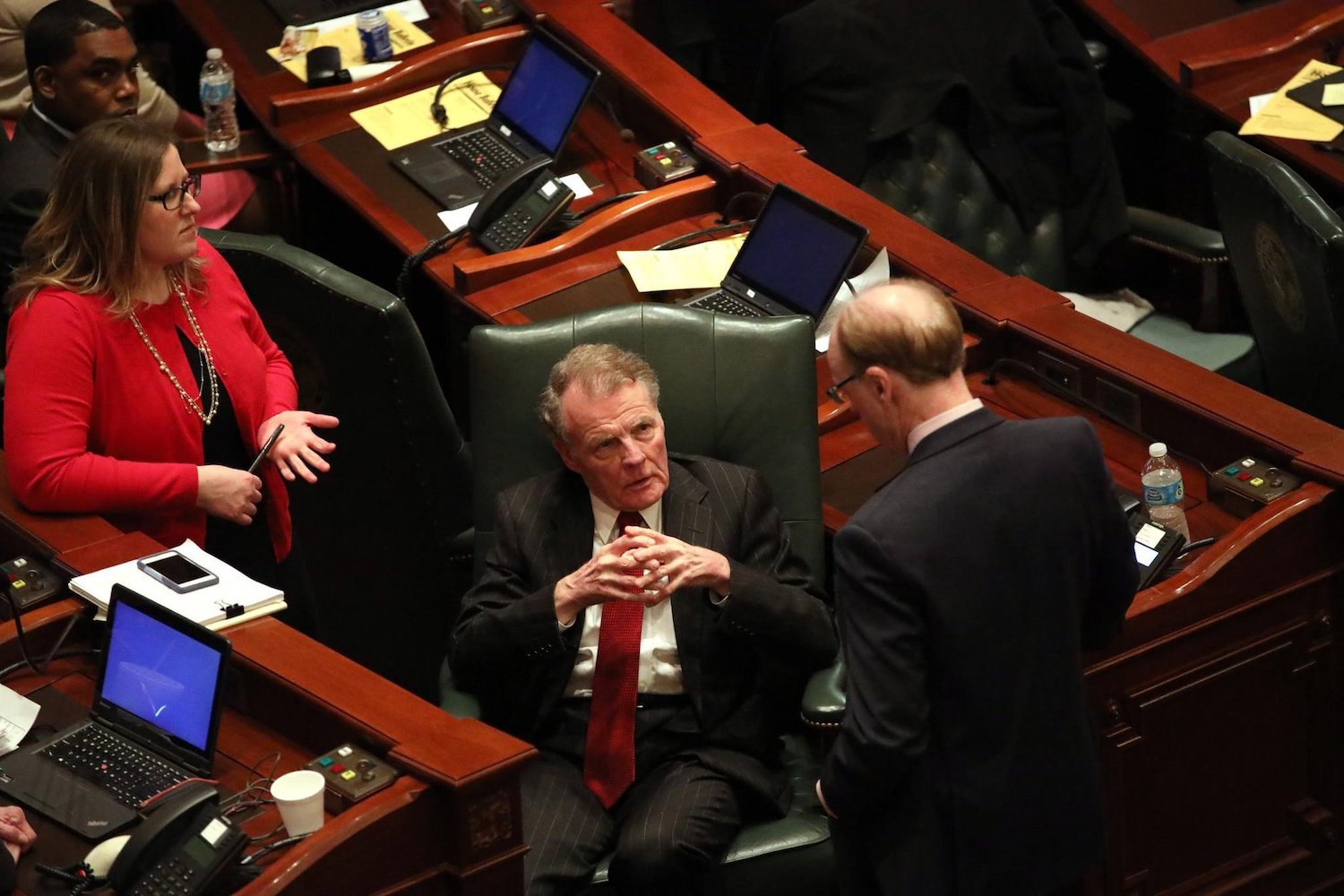The Illinois General Assembly once had an unusual method of electing representatives — one that may be worth reviving. Every district sent three members to Springfield, and every voter got three votes, which could be spread among three candidates split between two or “bulleted” on one. The 177-member chamber was known as the Big House, the system that produced it as cumulative voting.
Another feature: each party only ran two candidates per district, meaning Republicans got elected in Chicago, and Democrats in DuPage County. That was the whole point of the Big House. In 1870, when Illinois drafted its second constitution, the legislature was bitterly divided between southern Democrats and northern Republicans, who followed the Civil War principle of “vote the way you shot.” Chicago Tribune publisher Joseph Medill proposed cumulative voting so “the strong men of a party throughout the state may be elected, although living in districts where their party is in a minority.”
In 1979, members of the Big House made themselves unpopular by voting themselves a 25 percent pay raise. In retaliation, Pat Quinn, then in his political agitator phase, collected enough signatures to put a “Cutback Amendment” on the ballot. The amendment eliminated cumulative voting, replacing it with 118 single-member districts. The idea of firing 59 legislators was wildly popular: the Cutback Amendment passed 2-1.
The Cutback Amendment turned out to be one of the biggest political self-owns in Illinois political history. When the new, smaller House took office in 1983, it elected as its speaker Michael Madigan, who went on to amass far more power than he ever could have in the Big House. When Quinn finally made it to the governor’s office, he found that Madigan, not he, was the most powerful man in Springfield. The reason: It is a lot easier to control Democrats from Democratic-majority districts than Republican-majority districts. And vice versa. In the 1970s, South Side Republican Susan Catania voted in favor of abortion, gun control and the Equal Rights Amendment without fear of retribution from party leadership.
North Chicago Democrat John Matijevich, who served both in the Big House and the House of Madigan, once commented that “it seemed like there was more debate” before the Cutback Amendment.
When then-state Rep. Sara Feigenholtz proposed a constitutional amendment to bring back the Big House in 1999, Madigan quashed it, officially because he feared that two Democrats competing for votes in a Democratic district would cancel each other out, leading to the election of two Republicans. Now that he’s gone, and now that partisan politics are as polarized as they’ve been since the Civil War era, maybe it’s time to try cumulative voting again.
“Things weren’t as polarized as today,” said former Gov. Jim Edgar, who represented Charleston in the Big House, then served as Gov. Jim Thompson’s legislative liaison. “It ensured you were going to have more liberal Republicans and conservative Democrats. You could be a minority member in the House, you could have an impact. You had to compromise. You had Black Republicans in your caucus from Chicago. You didn’t have that party control as you do now.”
In 2001, Edgar and federal judge Abner Mikva led a task force that called for the revival of cumulative voting. Mikva credited cumulative voting with allowing him to win election to the state House over the objection of party regulars. When he ran for Congress in the northern suburbs, “in a district that had not elected a Democratic congressman in 80 years, I built on the base that elected Democratic state representatives had created in previous elections.”
According to a 1991 article in Illinois Issues, “[t]he Cutback virtually eliminated moderate-to-liberal Chicago Republicans and independent suburban Democrats. And it probably helped create a House more dominated by its leadership…the House is more partisan and its Democratic speaker, Michael J. Madigan of Chicago, more powerful.”
Downstate Illinois would benefit most from a revived Big House. In the 20th Century, Downstate produced some of the state’s most powerful politicians: Adlai Stevenson, Paul Powell, Paul Simon, Alan Dixon — all Democrats. As a result of the political and demographic trends of the 21st Century, Downstate has become so marginalized that some legislators have introduced bills to separate from Chicago, believing that’s the only way to control their political destiny. Southern Illinois was once a Democratic stronghold, due to powerful mining unions. Like most of rural America, though, it has switched its allegiance to the Republican Party during the Red-and-Blue era that began in 2000. At the same time, the suburbs went the other way. The suburbs have more votes, so Northern Illinois Democrats now dominate the state from top to bottom. Southern Illinoisans in the Democratic caucus might have argued that their part of the state would be pinched harder by a gas tax increase than Chicago, since driving is the only way to get around there.
Cumulative voting had its flaws. Some of the Chicago “Republicans” were actually Democrats in disguise, especially those from the West Side Bloc, who always followed Mayor Richard J. Daley’s orders. And there’s no guarantee it would prevent the rise of another all-powerful speaker. Crediting a smaller, more homogenous House for Madigan’s unprecedented power may not be giving enough credit to Madigan.
“Madigan’s a smart guy,” Edgar said. “He probably could have found a way to make cumulative voting work for him.”
Related Content



